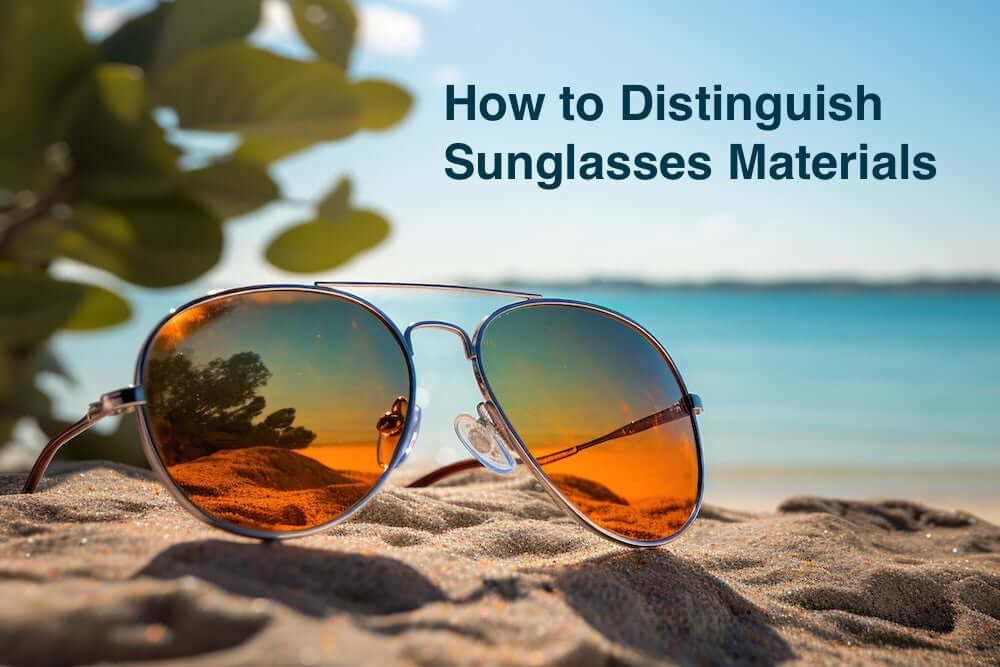
How to Distinguish Sunglasses Materials
Sunglasses are more than just a fashion accessory; they are essential for protecting your eyes from harmful UV rays and enhancing your vision in bright conditions. When selecting the perfect pair of sunglasses, understanding the materials used in their construction is crucial. This guide will help you distinguish between different sunglasses materials, ensuring you make an informed choice.
1. Lens Materials
The lens material is a critical factor in determining the durability, weight, and clarity of your sunglasses. Here are the most common types:
Glass
- Pros: Superior optical clarity and scratch resistance.
- Cons: Heavier and can shatter upon impact.
- Best for: Those prioritizing clarity and scratch resistance.
Polycarbonate
- Pros: Lightweight, impact-resistant, and provides UV protection.
- Cons: More prone to scratches compared to glass.
- Best for: Sports and outdoor activities due to its durability.
Acrylic
- Pros: Affordable and lightweight.
- Cons: Less durable and offers lower optical clarity.
- Best for: Casual, everyday wear.
Trivex
- Pros: Combines the lightweight nature of polycarbonate with better optical clarity.
- Cons: More expensive than polycarbonate.
- Best for: High-performance activities and those needing superior clarity.
2. Frame Materials
The frame material affects the comfort, weight, and durability of the sunglasses. Here are the main types:
Plastic
- Nylon: Flexible, lightweight, and resistant to temperature extremes. Ideal for sports sunglasses.
- Acetate: More rigid, offering a variety of colors and finishes. Known for its durability and high-quality appearance.
- TR-90: A thermoplastic material known for its flexibility and impact resistance. Comfortable for extended wear.
Metal
- Stainless Steel: Durable, corrosion-resistant, and hypoallergenic. Slightly heavier than other metals.
- Aluminum: Lightweight and corrosion-resistant but less flexible.
- Titanium: Extremely lightweight, durable, and hypoallergenic. Often used in high-end sunglasses.
- Monel: A mixture of metals that is durable and resistant to corrosion, commonly used in mid-range sunglasses.
Composite
- Carbon Fiber: Extremely strong and lightweight. Offers a modern, high-tech look and is resistant to temperature changes.
- Wood: Provides a unique, eco-friendly aesthetic. Each pair is unique due to the natural grain of the wood.
- Bone and Horn: Rare and luxurious, offering a distinct appearance. Requires special care to maintain.

3. Coatings and Treatments
Different coatings and treatments can enhance the functionality of sunglasses lenses:
- Anti-Reflective Coating: Reduces glare from light reflecting off the back of the lenses.
- Mirror Coating: Reduces the amount of light entering the eyes, ideal for very bright conditions.
- Polarized Coating: Reduces glare from reflective surfaces like water and roads. Great for driving and outdoor activities.
- UV Coating: Essential for blocking harmful UV rays. Always ensure your sunglasses provide 100% UV protection.
- Photochromic Treatment: Lenses that adjust their tint based on the light conditions. Convenient for those moving between different light environments.
4. Choosing the Right Material
When choosing sunglasses, consider the following factors:
- Intended Use: For sports or active lifestyles, prioritize lightweight and impact-resistant materials like polycarbonate or nylon.
- Durability: If you need long-lasting sunglasses, consider materials like titanium or TR-90.
- Comfort: For all-day wear, look for lightweight materials with comfortable nose pads and temple tips.
- Style: Select materials that match your personal style and offer the aesthetic you desire, such as acetate for a bold look or metal for a sleek, modern appearance.
- Budget: While high-end materials like titanium or carbon fiber may offer superior benefits, there are also excellent options available at lower price points.
Conclusion
Understanding the different materials used in sunglasses can help you make an informed decision that suits your needs and lifestyle. Whether you prioritize durability, style, comfort, or optical clarity, there is a perfect pair of sunglasses out there for you. By considering the benefits and drawbacks of each material, you can ensure your sunglasses provide both protection and style for years to come.


